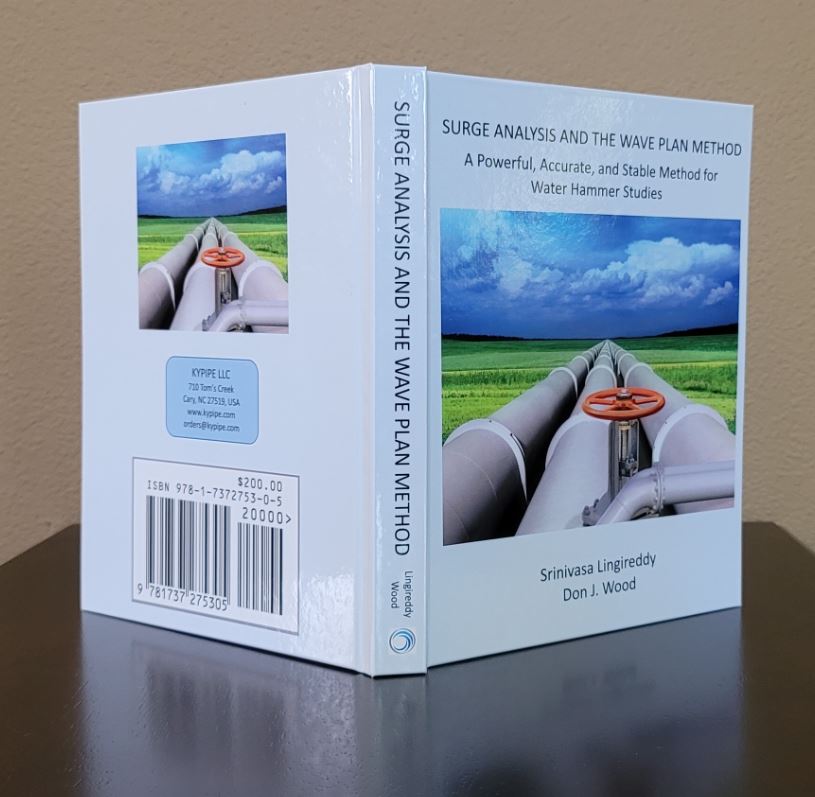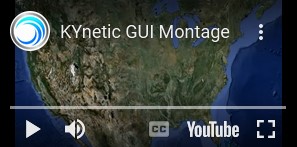
Supplementary Problems and Solutions
Preview the book: Google Play (includes chapter 1) or PDF (Introduction and Index)
| Surge Analysis and the Wave Plan Method |
| A Powerful, Accurate and Stable Method for Conducting Water Hammer Studies (2021) |
| The authors wrote this book for practicing engineers and consultants, as well as for academic use, both as a reference for professors and as a coursework text for advanced students of civil/hydraulic engineering. The book was written by Dr. Srinivasa Lingireddy and Dr. Don J. Wood, who both served in academia at the University of Kentucky. Dr. Lingireddy is also currently a practicing design engineer/consultant. The book describes the causes and effects of transient (water hammer) events in liquid-filled pipes, and describes how the powerful and stable Wave Plan Method (WPM) can be used to address transients during surge modeling. The authors compare and contrast WPM with the Method of Characteristics (MOC), which is the other widely-used surge analysis tool. While MOC can be useful for many situations, the larger and more complex a model becomes, the more the computational efficiency of WPM is necessary to avoid longer and longer analysis times. The authors describe how WPM is more generalizable than MOC, since MOC is not just one tool but actually consists of several variants that were developed to address different modeling situations. This book provides details on surge modeling in general and the use of WPM in particular. This includes pressure attenuation, determination of wave speeds in different pipe types and in various liquid media, pump and turbine characteristics curves, and the effects of boundary conditions. The discussion of boundary conditions includes an extensive look at the effects of the air-water interface as it applies to bulk air intrusion into pipelines, and as it relates to the use of air/vacuum valves for surge protection. The authors discuss surge protection design for different real-world scenarios, and how to model a full list of surge control devices, including a detailed discussion of check valves. Check valves, while a necessary pipeline feature, can create destructive transients by a phenomenon known as check valve slam. Last, the book describes the assumptions and uncertainties encountered during data collection and model building, and examines the potential effect of these uncertainties. Where uncertainties cannot be mitigated, the authors discuss ways to increase the safety factor of surge protection designs. |
| An excerpt from the book including the Title Page, the Table of Contents and the Introduction (which describes the chapters and appendices in detail) can be accessed by clicking here: excerpt link. The book can be ordered by emailing [email protected] or calling 469-250-1362. The price for the book is $200, with free ground shipping in the continental US. Contact us for express shipping prices and shipping to other areas of the world. The book is also available as an e-book, click here for ordering information: e-book link. |



